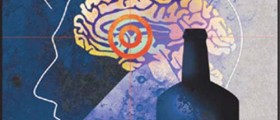
The majority of drug addicts do not conform to a stereotype. However, addiction does of course begin with a conscious decision to experiment with drugs. Research has also found that drugs interfere with normal brain function and can have long term negative effects on the metabolism of the brain and other related activity. The brain causes the body to become addicted to drugs. This is a craving that becomes impossible to overcome, and can affect everyone and anyone. It is also worth remembering that both legal and illegal drugs can become addictive. Addiction should be viewed as a chronic illness, rather than a defect in a personality.
About addiction
Drug abusers who become completely addicted worsen to the point of having no choice but to carry on abusing drugs. They become totally dependent on drugs. However, there are some differences and variations with regard to how addictive certain drugs are. There are slight differences between the types of addiction and dependency that can occur as a result of drug abuse. These types are physical and psychological dependency. Physical dependency refers to the moment when the body becomes completely accustomed to the drug. In this case, ceasing the intake of the drug can lead to withdrawal symptoms, such as headaches, sweating, vomiting, tremors and insomnia. Psychological dependency occurs when the mind becomes totally dependent on the effects of the drug in question. Absence of intake can lead to serious cravings. In many cases, an addict will suffer from both types of addiction.
Categorization
It is often the case that drugs are categorized in certain ways. For example, a drug might be classified as legal, illegal, soft or hard. Some drugs might be considered to be uppers, downers or even addictive and non-addictive. Often, drugs are categorized by their effects. This might lead to drugs being categorized as depressants, hallucinogens or stimulants.
Depressants reduce the efficiency of the central nervous system and increase activity in the brain. Examples of this type include Alcohol, Barbiturates, Heroin and Tranquillizers. Hallucinogens change our perception of reality. In many cases, users of these drugs will see and hear things that are not real. Our experience of the world changes with these drugs. Examples of these drugs include LSD, cannabis, magic mushrooms and ketamine. Stimulants also increase brain and central nervous system activity. Examples of this kind of drug include ecstasy, crack, cocaine, amphetamines, nicotine and anabolic steroids.

















Your thoughts on this
Loading...